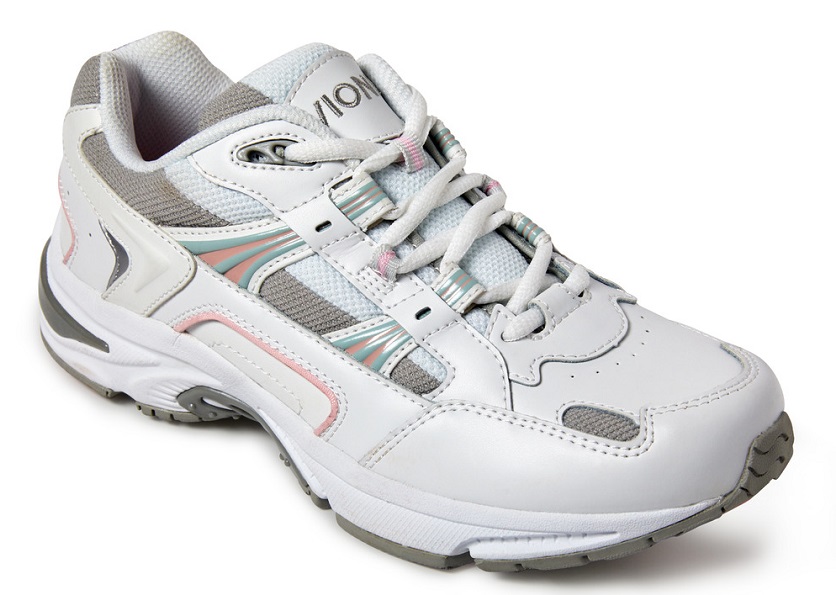
There’s a lot to love about walking. It’s one of the easiest workouts, it’s free, and it’s low-impact. Not only that, but studies have shown that those who take regular walks have less body fat than those who don’t. This is great news for anyone looking to start their weight loss journey.
Is it possible to walk your way to physical fitness? We’re happy to tell you it most certainly is. Read on to learn how to start walking to lose weight, plus actionable tips for creating a weight loss walking program and a breakdown of the benefits of daily walks.
Benefits of Daily Walks
Exercise doesn’t have to be complicated—or even very challenging, for that matter. Walking is a form of aerobic exercise, meaning it uses continuous oxygen and works your cardiovascular system.
While it doesn’t build as much muscle as strength training, you’re still engaging muscles throughout your body with every step. A simple daily walk at a brisk pace can set you on the path to losing weight and living a healthier life. At Vionic, we’re here to assist you by providing the ultimate comfort with our collections of walking shoes for women and walking shoes for men.
The benefits of implementing a walking program include:
- Weight loss and management
- Improved cardiovascular health
- Increased muscle strength
- Increased bone density
- Improved balance and coordination
- Enhanced physical endurance
- Increased energy levels
- Better sleep
- Improved mood and reduced stress
- Lowered blood pressure
- Strengthened immune system
With a strengthened immune system, a walking routine may also ward off various health conditions, like heart disease, stroke, blood clots, and type 2 diabetes.
Walking for Weight Loss Plan: 14 Tips
Starting a new exercise regimen is often the hardest part. But once you get into a groove, you’ll be well on your way to weight loss and a healthier lifestyle. Find specific tips on how to improve your health and insight into implementing a walking plan below.
Start Slow
As with any workout program, you want to avoid diving in full-throttle. Doing too much too soon puts you at risk for injury and burnout. To keep up the routine, avoid debilitating soreness, and set yourself up for long-term success, it’s best to start slow.
Kick things off with a simple goal, like taking 15-minute walks three times a week at a moderate pace. Once you’ve mastered that, you can tack on a few minutes to each walk or add another day each week.
Perfect Your Stride
Another critical aspect of a successful walking workout plan is honing in on proper form so you stay aligned and avoid injury.
Here’s how to perfect your stride while walking:
- Engage your core and keep your back in a straight, neutral position (not hunched or arched).
- Relax your neck and shoulders.
- Look directly ahead of you with your chin in a neutral position (not looking down at your shoes or smartphone).
- Roll your feet from heel to toe with each stride.
- With your elbows slightly bent, allow your arms to swing gently back and forth while you walk.
Listen While You Walk
Your walking exercise plan should be enjoyable. Consider listening to an upbeat playlist or a podcast. If you have a favorite podcast, you might choose to listen to it only on walks so you have something to look forward to when stepping out the door.
Walk With a Buddy
Another way to make walking more enjoyable is to recruit a buddy. Whether it’s a friend, neighbor, partner, or group of people, having company can make the time pass much quicker with the added mental bonus of socialization.
Consider the Terrain
When you’re first starting out, you might want to stick to the sidewalk, a track, or an otherwise simple walking path. On the other hand, uphill routes and uneven terrain are a little more difficult—though the added exertion and unpredictability can offer cardio and muscle-toning benefits.
Mix Up Your Routes
You might want to walk the same route the first couple of weeks. But when you start walking for longer than 15 or 20 minutes at a time and bump it up to five or six days a week, you may want to switch things up to avoid boredom.
Not only is a change in scenery good for your mindset, but varying terrains and inclines will also keep your muscles and cardiovascular system guessing. Whether it’s around your neighborhood, at the park, or on a hiking trail, it’s good to have at least three go-to routes of varying distances and terrains.
Gradually Increase Your Time, Speed, and Distance
After two or three weeks, start to gradually increase your time, speed, and distance—but not necessarily all at once. For instance, maybe you walk for an additional five minutes each walk on the third week. Then on the fourth week, you walk the same number of times and the same routes, but try to complete each walk faster. The next week, maybe you walk a quarter mile longer each day.
Aiming for at least 150 minutes a week is a good goal for long-term health. However, as you build endurance, you’ll have to make your routine a little more challenging in order to continue losing weight.
Go Digital
You might want to track your steps with a pedometer, smartwatch, or a walking app. There are lots of excellent options available, and step-tracking can be a great way to monitor your progress.
Apart from a walking tracker, you may want to download a weight loss app to input your weight loss goal, log your physical activity and daily calorie intake, and determine how long it’ll take you to meet your target weight.
Try Interval Walking
To bump up the calorie burn, try interval walking. You’ll alternate between a brisk walking pace to get your heart rate up and an easy pace for recovery. Like other forms of interval training, this method can burn more calories than a normal walking speed.
Remember to Stretch
Stretching is a vital component of any workout plan. It increases flexibility, helps prevent injury, and minimizes soreness after strenuous physical activity.
Wear Comfortable Clothing
One of the best parts about walking is that you don’t necessarily need to wear traditional workout gear. Having said that, you’ll still want to wear comfortable clothing. Whether it’s proper performance apparel or streetwear, the most important thing is that your clothes allow for a full range of motion.

Wear Proper Shoes
Proper footwear is arguably more crucial than the clothes you wear while walking. Wearing the wrong shoes can lead to heel pain, blisters, shin splints, alignment issues, and other foot-related problems.
Walking shoes should have ample arch support, deep heel cups, and firm yet flexible outsoles that absorb shock. Not sure where to look? Vionic carries a wide range of options for women and men.
Stick With It
Walking isn’t necessarily a fast track to reaching your weight loss goal. Nonetheless, it’s one of the most underrated and enjoyable forms of exercise that virtually anyone can do. If you stick with it, stay patient, and take it one day at a time, you’ll lose weight and reap many other health benefits.
Check in With Your Healthcare Provider
Before embarking on a new exercise regime, starting a particular diet plan, or consuming substantially fewer calories than you’re used to, be sure to check with your healthcare provider.

What Are the Best Walking Shoes?
Whether your goal is to create a daily calorie deficit, achieve fat loss, or maintain a healthy body weight, a walking program is a great way to accomplish your goals. But before getting started with your journey on how to work out, we encourage you to invest in a pair of supportive walking shoes.
Vionic is your resource for comfortable, stylish orthotic footwear for every activity. This includes active sneakers for men and women, along with comfortable sandals, boots, work shoes, and everything in between. Get yours today!
External sources:
- “12 Benefits of Walking”. Arthritis foundation. https://www.arthritis.org/health-wellness/healthy-living/physical-activity/walking/12-benefits-of-walking
- “Walking: Trim your waistline, improve your health”. Mayo Clinic. https://www.mayoclinic.org/healthy-lifestyle/fitness/in-depth/walking/art-20046261
- “Walking for good health”. Better Health. https://www.betterhealth.vic.gov.au/health/healthyliving/walking-for-good-health
- Brianna Steinhilber. “Why walking is the most underrated form of exercise”. NBC News. Updated May 4, 2018, https://www.nbcnews.com/better/health/why-walking-most-underrated-form-exercise-ncna797271
- “How much physical activity do adults need?”. CDC. https://www.cdc.gov/physicalactivity/basics/adults/index.htm
- Meghan Rabbitt. “12 Biggest Benefits of Walking to Improve Your Health, According to Experts”. Prevention. JUly 14, 2021, https://www.prevention.com/fitness/a20485587/benefits-from-walking-every-day/
- “5 surprising benefits of walking”. Harvard Medical School. https://www.health.harvard.edu/staying-healthy/5-surprising-benefits-of-walking
- “5 surprising benefits of walking”. UC Berkeley. https://uhs.berkeley.edu/health-topics/exercise-starting-walking-program


Leave a Reply